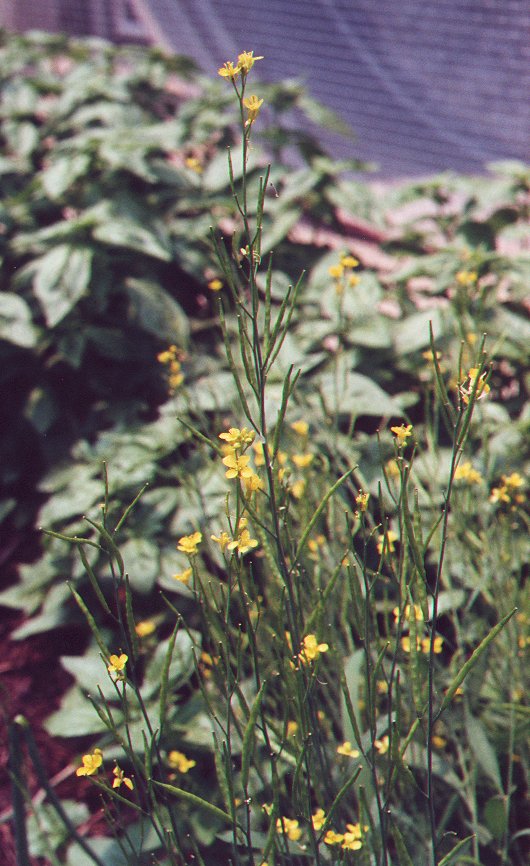Brassica nigra (L.) W.D.J. Koch
Black Mustard

Introduced
CC = *
CW = 5
MOC = 28
© DETenaglia
Brassica nigra (L.) W.D.J. KochBlack Mustard | |
 |
Introduced CC = * CW = 5 MOC = 28 |
© DETenaglia |
|
Family - Brassicaceae Habit - Annual forb, from taproot. Stems - Erect, to 2 m, single or few from base, glabrous and glaucous above, sparsely to densely pubescent near base, branching above, from taproot. Branches erect, staying mostly parallel to main axis. Leaves - Basal and lower leaves 6-25 cm long, irregularly pinnately divided or lobed or toothed, petiolate, lyrate to obovate to elliptic in outline. Stem leaves alternate, progressively reduced toward the tip, the uppermost 1-5 cm long, petiolate with nonclasping bases, entire or with a few coarse, shallow teeth. Inflorescence - Terminal racemes elongating in fruit to 60 cm. Pedicels 2-4 mm long in flower, to 1.3 cm long in fruit, glabrous. Flowers - Sepals 4, 4-6 mm, greenish-yellow, 4 mm long, linear, erect to spreading, glabrous. Petals 4, 7-11 mm long, yellow, clawed, glabrous. Stamens 6, erect. Filaments greenish-yellow, to 4 mm long, glabrous. Anthers yellow. Ovary green, terete, 3 mm long, glabrous. Style 1.3 mm long, persistent in fruit.
Fruits - Siliques 10-25 mm long, erect, appressed to the inflorescence axis, somewhat 4-angled in cross-section, abruptly narrowed to a linear beak and 2-5 mm long. Seeds 4-15 per fruit, globose, 1.2-2.0 mm in diameter. Flowering - April - November. Habitat - Fields, waste ground, roadsides, also cultivated. Origin - Native to Eurasia. Lookalikes - Other mustards, especially within the Brassica genus. Other info. - This introduced plant is widely scattered in Missouri and throughout the U.S. It is somewhat sporadic and lacks a well-defined range. The plant can be identified in the field by the large number of erect fruits it produces, its deep green leaves, and its small yellow flowers. The stems are long and thin. The plant often falls over when it reaches maturity, weighed down by the large number of fruits produced. Photographs taken at the Kansas City Zoo, 7-2-00. |